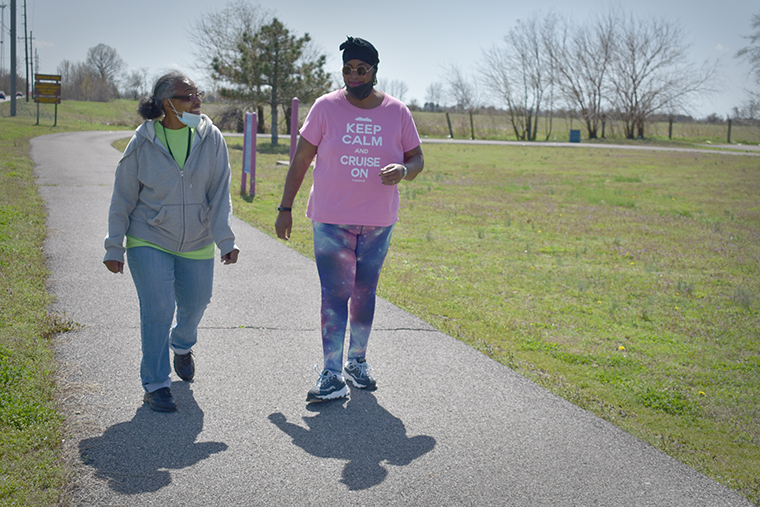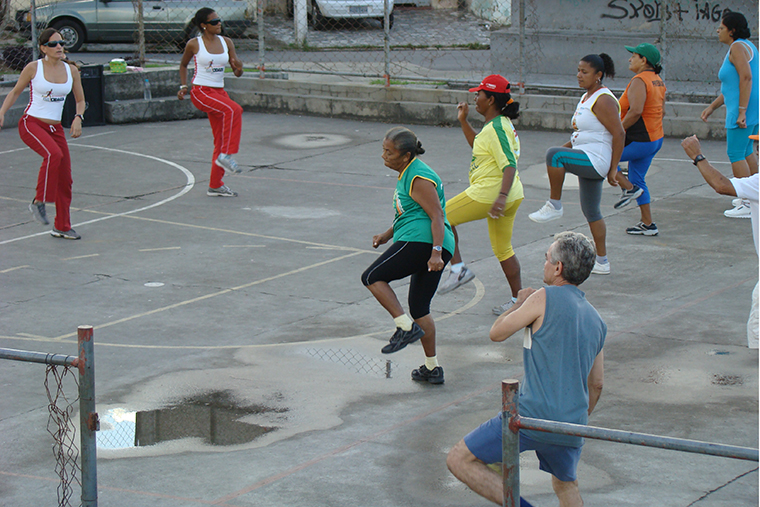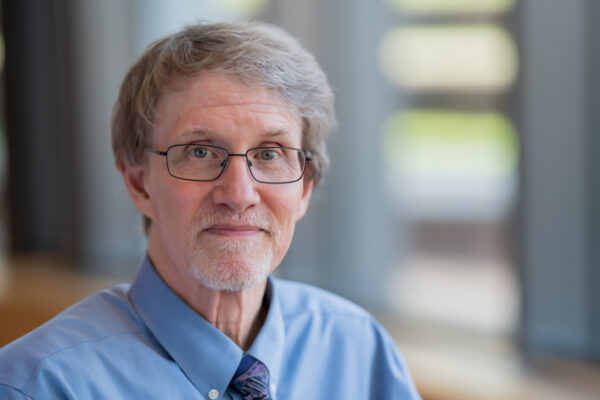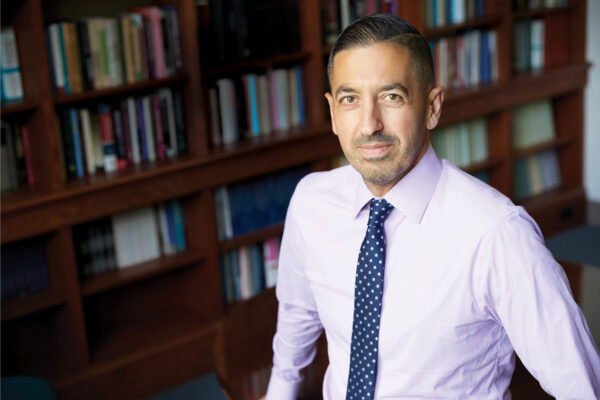Public health is often the unseen force that keeps our communities thriving. From ensuring clean water to managing vaccination programs and regulating food safety, it is the vital infrastructure that promotes healthier lifestyles and safeguards our environments. Without it, communities are left vulnerable to emerging threats, underscoring the critical need to reinforce this infrastructure.
What makes public health effective is not guesswork. The most successful programs are rooted in research evidence, addressing the unique needs of the populations they serve — whether reducing pollution in a city or tackling health-care access in remote, underserved areas. This is the essence of evidence-based public health (EBPH), which merges scientific findings with the realities of everyday life.
Implementing EBPH is far from simple. It requires not only expertise in research and data collection but also the ability to translate findings into effective solutions. This process is time-consuming and resource-intensive. Further, only 14% of the U.S. public health workforce holds a degree in public health.
“Particularly in smaller public health agencies, it is common to see people rise up through the ranks, often without formal training in public health,” said Ross C. Brownson, director of the Prevention Research Center at Washington University in St. Louis. “This points to a significant need for on-the-job training for these individuals to master the skill sets needed to address complex, so-called ‘wicked’ public health challenges.”
This skills gap can lead to reliance on quick fixes or anecdotal evidence, especially under time pressure.
This raises critical questions: How do we better prepare both students and working professionals to meet the evolving demands of the field? And how do we ensure that the programs implemented are backed by evidence and are truly effective?
Role of prevention research centers
To bridge this gap, Prevention Research Centers (PRCs) have emerged as essential academic hubs partnering with local health departments and community organizations. The Prevention Research Center at WashU was first funded by the U.S. Centers for Disease Control and Prevention (CDC) in 1994. Its goal was to develop and implement evidence-based strategies to reduce health disparities and improve public health outcomes. Today, there are 20 PRCs across the U.S., each addressing unique public health challenges faced by marginalized populations.
Part of the PRC’s mission at WashU centers on implementation science, which studies how to more effectively and quickly apply evidence in real-world practice and policy. WashU is an international leader in implementation science and is home to over 50 implementation scientists.
Brownson, also the Steven H. and Susan U. Lipstein Distinguished Professor at the Brown School and the School of Medicine and co-director for prevention and control at Siteman Cancer Center, co-authored the seminal book on the subject, “Dissemination and Implementation Research in Health: Translating Science to Practice.” This widely cited 712-page guide, co-written with WashU’s Graham A. Colditz, MD, DrPH, and Enola K. Proctor, is a key resource for advancing evidence-based public health practices.
The PRC at WashU focuses on prevention strategies for chronic diseases, including cancer, obesity, heart disease and diabetes. Rather than working in isolation, this multidisciplinary team — comprising faculty, staff and students — engages directly with communities, taking a grassroots approach to co-design and implement solutions.
Amy A. Eyler, deputy director of the PRC at WashU and a professor at the Brown School, explains how the center’s focus evolved to respond to public health challenges: “As obesity rates surged 20 to 25 years ago, we conducted some of the earliest studies examining how community environments affect physical activity and obesity. Our research revealed, for instance, that the barriers to physical activity vary significantly among women over 40, depending on their race, ethnicity and whether they lived in urban or rural areas.”
A community-driven success

Among the significant initiatives at the PRC at WashU is a series of projects designed to promote physical activity in rural Missouri. The PRC focused on policy changes aimed at modifying the built environment to encourage healthier behaviors. By collaborating with local stakeholders, these programs have created and improved over 30 walking trails across southeastern Missouri and established community walking groups and awareness campaigns, helping rural residents overcome barriers to physical activity.
The PRC worked to ensure the solutions were not only effective but sustainable. The most recent project, Heartland Moves, continues to have an impact, with local leaders carrying the project forward after the end of grant funding.
One key partner in the region is Dixie Duncan, a public health expert in southeast Missouri. In a region with some of the lowest life expectancies in the U.S., Duncan fought to secure resources for public health initiatives. With grant-writing assistance and technical support from the PRC, she is working to improve health outcomes in her community, demonstrating how local capacity building can create lasting change.
Enacting public health policy
Moving the needle on public health requires a broadscale approach, Eyler said. “To address issues like obesity, we need to focus on partners beyond health such as agriculture, transportation, city planning and schools — areas that don’t typically have health as their primary focus,” she added. “The challenge is getting people to consider health and equity, even when their core mission isn’t health-related.”
The PRC’s approach also highlights the nuanced role of policy in public health. As experts explain, sometimes simply getting a policy discussed is a victory, even if it doesn’t pass the first time. This initial engagement can set the stage for future attempts that may eventually succeed in creating lasting change.
Advocates achieve progress by addressing problems on multiple fronts, combining large-scale actions such as legislative changes with smaller, community-driven initiatives, creating a comprehensive approach that maximizes impact at every level. “We often talk about ‘big P’ and ‘little p’ policies,” said Renee Parks, senior research manager with the PRC.
While legislative “big P” policies such as the Complete Streets initiative in St. Louis strive to improve transportation infrastructure for all users, smaller “little p” policies such as providing free transit passes can have equally important effects. The Complete Streets initiative aimed to design streets that offer safe access for everyone, including pedestrians and bicyclists. The PRC at WashU provided evidence-based recommendations that helped guide local decisions on improving the built environment for underserved communities.
Global impact
The PRC at WashU’s influence extends beyond U.S. borders. In Latin America, the PRC played a crucial role in evaluating and scaling a public health project known as Academia da Cidade (City Gym) in Brazil and Colombia. The Academia da Cidade focused on creating accessible, open-air gyms and fitness areas in parks and public spaces. With WashU PRC support in the evaluation phase, the project expanded from a single community to an entire nation — evolving into Academia da Saude (Health Gym) — eventually reaching 1,000 cities.
PRC faculty members Diana C. Parra Perez, an assistant professor, and Rodrigo Reis, a professor, both from the Brown School and originally from Latin America, are key contributors to these research projects. The PRC’s contribution was primarily in the evaluation phase, adding a level of analysis often missing in public health efforts. This evaluation helped demonstrate the effectiveness of the intervention, and the team’s connections with the Brazilian Ministry of Health allowed the program to expand.
Despite changes in government over time, many of the Academia da Saude programs remain in place, making this one of the PRC’s largest-scale interventions. This international success story highlights the importance of evidence-based evaluation in public health efforts and underscores the value of partnerships with local and national governments.
Equipping practitioners
Much of the PRC at WashU’s work focuses on training professionals, community leaders and students to implement evidence-based practices — equipping both seasoned practitioners and future leaders with the needed skills to address public health challenges.
One of the PRC’s standout initiatives has been its evidence-based public health (EBPH) course. The program consists of 10 modules that essentially walk participants through many of the core elements of a master of public health curriculum, step by step. Throughout, the course emphasizes active learning through case studies and real data from participants’ own communities. The course has evolved to meet the changing needs of the public health workforce, and to date, over 4,000 professionals from around the world have completed it.
Paula Clayton, former director of chronic disease and health promotion at the Kansas Department of Health and Environment, was an early graduate of the EBPH course who recruited others in her department to attend. “In the chronic disease program, we lacked staff with formal public health degrees, but we had people with relevant backgrounds and the ability to fully grasp and apply the training from the EBPH program,” Clayton said. “This training was exactly what we needed at the time.”
Clayton credits the WashU program with providing her team the tools to develop evidence-based programs, enhance partnerships and compete for grants. It also laid the groundwork for initiatives like Kansas LEAN, a coalition focused on nutrition and physical activity and tobacco prevention programs.
Clayton emphasized the long-lasting impact of the training on her team’s decision-making process. “The training helped us identify the right questions to ask and the kind of information we needed to gather. It provided a structured, evidence-based process for improving public health that was invaluable to us.”
As part of the WashU PRC’s “train-the-trainer” initiative, members of the Kansas team were trained as course facilitators, allowing the state to host its own EBPH courses, reaching additional public health practitioners across the state.
The next era
For 30 years, the PRC has nurtured students into influential public health leaders. At the PRC, graduate students gain hands-on public health research experience with close faculty and staff mentorship. Master’s students contribute to projects, honing data analysis skills and often earning co-authorship in publications. Doctoral students blend coursework with real-world projects, and many alumni pursue careers as public health leaders, from professors to CDC scientists and advocates.
Many of the center’s former students, like Natalicio H. Serrano, have gone on to influential academic roles. After contributing to the Heartland Moves project, Serrano became an assistant professor at a top-ranked public health school, the University of North Carolina at Chapel Hill, focusing on sustainable policies for chronic disease prevention. Serrano credits the PRC’s world-class training and exposure to evidence-based, community-focused approaches for students’ success.
“I also attribute my growth as a scholar to the values the PRC has instilled in my work,” Serrano said. “From prioritizing community needs, to centering equity in my research, I always come back to these core questions of, ‘What is the impact I am having here, and for whom?’ These core principles to my work — creating equitable, sustainable strategies for chronic disease prevention — are a part of the culture at the PRC. I’ve also had amazing mentorship from both faculty and staff, and my experience has shaped my desire to be a mentor that promotes and welcomes inclusivity and diversity.”
Other former students have gone on to work at the CDC, the Urban Institute and other top universities.
The PRC’s longstanding mentorship offerings have helped “build the bench” at WashU, with alumni and postdoctoral former trainees moving into faculty roles at the Brown School and the School of Medicine. This group of assistant and associate professors includes Peg M. Allen, Maura M. Kepper, Stephanie L. Mazzucca-Ragan, Parra Perez, Thembekile Shato and Rachel G. Tabak. Staff members also play key roles within the PRC; many within the PRC are WashU alumni and former research assistants who have dedicated years to building the PRC.
With plans to open a School of Public Health soon, Brownson said WashU is poised to deepen its commitment to addressing public health challenges through research, education and community partnerships. “By training the next generation of public health leaders and continuing its evidence-based approach, the PRC ensures that public health remains a powerful, albeit often invisible, force for change and improved health,” he said.



